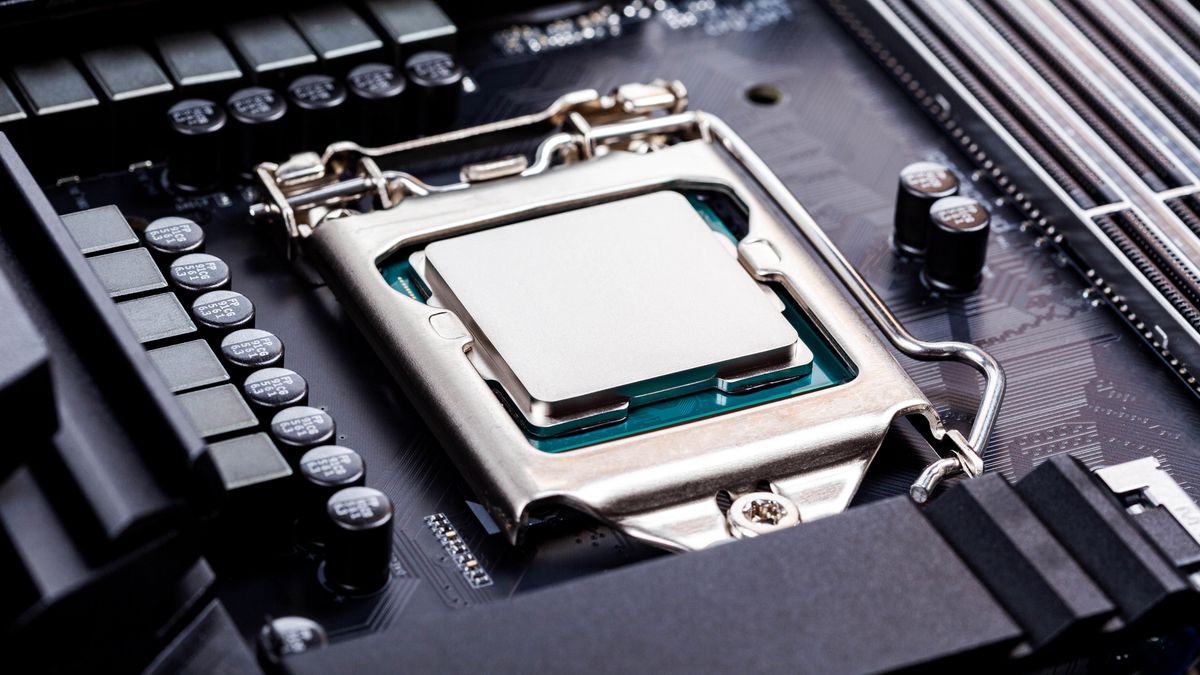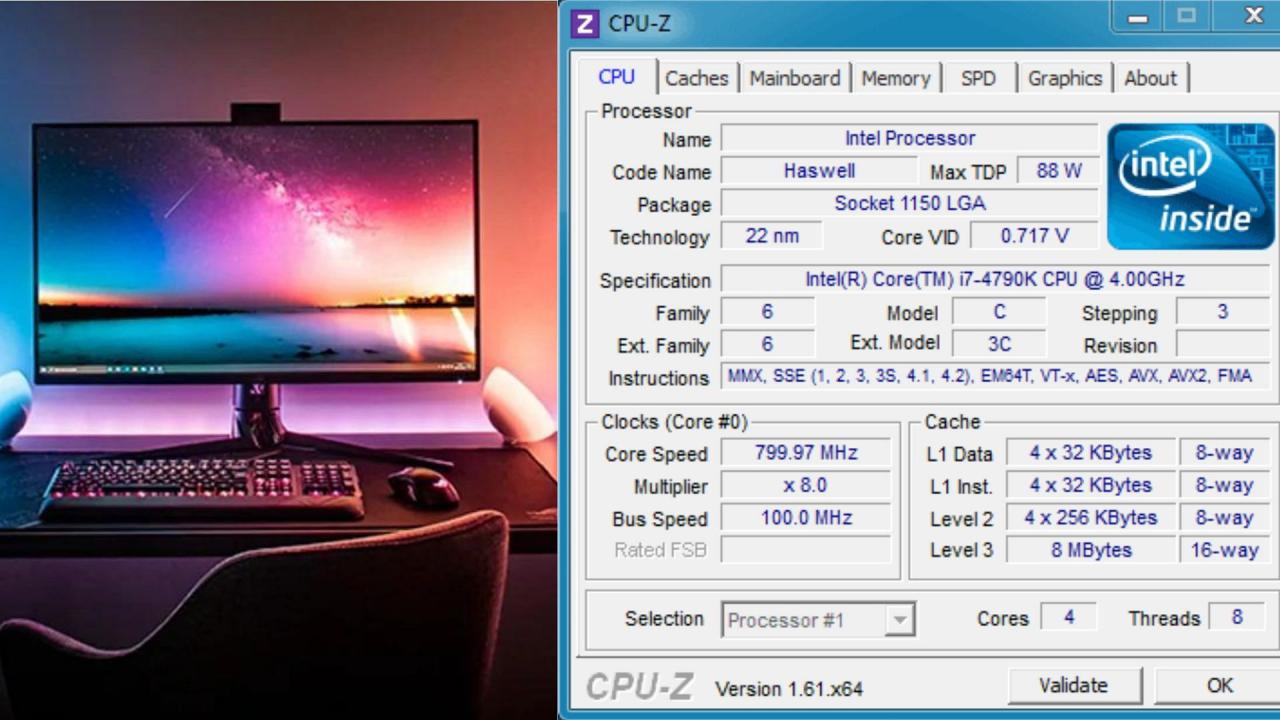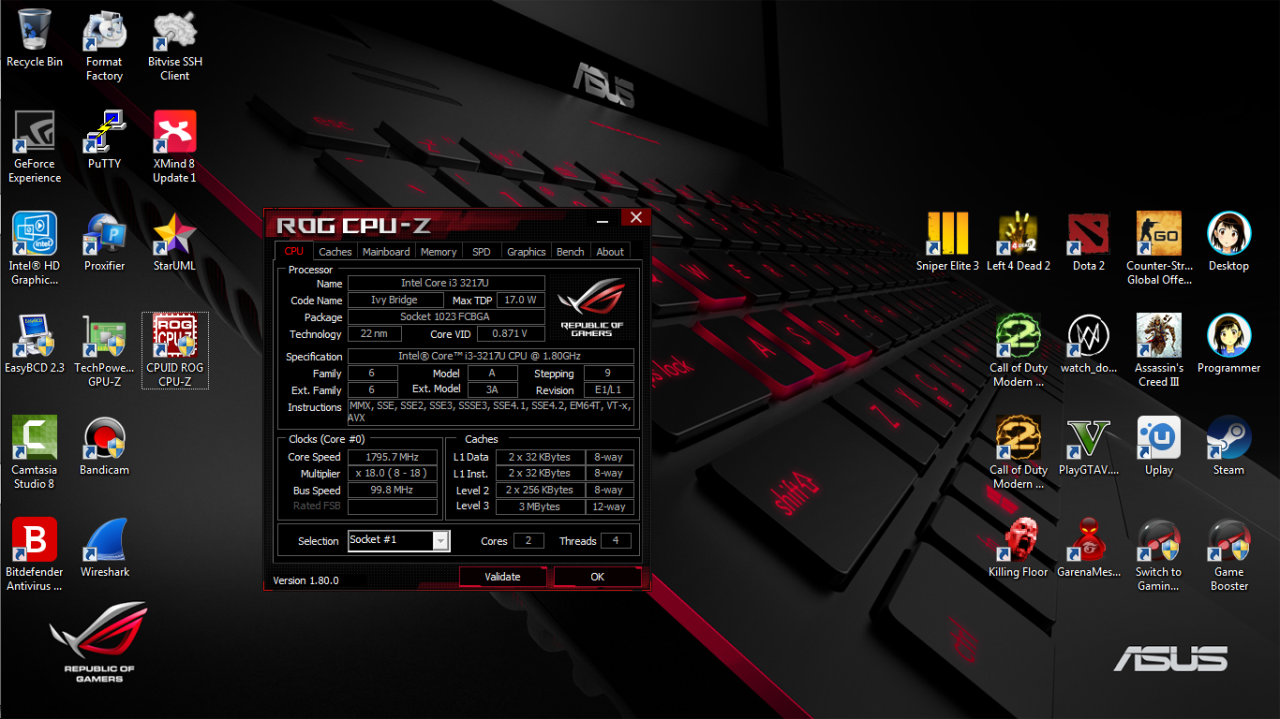Cpu z – CPU-Z: Need to know the nitty-gritty details of your computer’s hardware? This little utility is your best friend. It’s a free, easy-to-use program that provides a detailed breakdown of your CPU, motherboard, RAM, and even your graphics card. Think of it as a super-powered system information tool that reveals everything your computer is hiding. We’ll explore its features, show you how to use it for troubleshooting, and even compare it to some competitors.
This guide will walk you through installing and using CPU-Z, explaining how to interpret the data it provides. We’ll cover everything from identifying basic hardware specs to using it for more advanced tasks like diagnosing performance bottlenecks. Get ready to unlock the secrets of your system!
CPU-Z: A Deep Dive into Your System’s Hardware: Cpu Z

CPU-Z is a free, lightweight utility that provides detailed information about your computer’s hardware components. It’s a go-to tool for anyone wanting to understand their system’s specifications, troubleshoot problems, or compare hardware performance. This guide will walk you through its features, uses, and comparisons with other similar tools.
Introduction to CPU-Z
CPU-Z’s primary function is to identify and display comprehensive information about your computer’s central processing unit (CPU), motherboard, memory (RAM), and graphics card. Its user interface is clean and straightforward, presenting data in a clear, organized manner. Key features include detailed specifications for each component, benchmark testing capabilities, and the ability to save reports.
Installing CPU-Z is simple. Download the installer from the official website, run the executable, and follow the on-screen prompts. Launching the program is equally easy – simply double-click the CPU-Z icon on your desktop or in your applications folder.
Information Gathered by CPU-Z
CPU-Z gathers a wealth of information about your system’s components. This data is crucial for understanding your system’s capabilities and for troubleshooting hardware issues.
| Category | Subcategory | Value | Notes |
|---|---|---|---|
| CPU | Manufacturer | Intel, AMD, etc. | Identifies the CPU’s manufacturer. |
| CPU | Model | i7-12700K, Ryzen 7 5800X, etc. | Specifies the exact CPU model. |
| CPU | Clock Speed | e.g., 3.6 GHz | Indicates the CPU’s operating frequency. |
| Motherboard | Manufacturer | ASUS, Gigabyte, MSI, etc. | Shows the motherboard manufacturer. |
| Motherboard | Model | Z690-A, B550 Tomahawk, etc. | Displays the specific motherboard model. |
| Motherboard | Chipset | Z690, B550, etc. | Indicates the motherboard’s chipset. |
| RAM | Type | DDR4, DDR5, etc. | Specifies the type of RAM. |
| RAM | Size | 16GB, 32GB, etc. | Shows the total amount of RAM installed. |
| RAM | Speed | 3200 MHz, 4800 MHz, etc. | Indicates the RAM’s operating frequency. |
| RAM | Timings | e.g., 16-18-18-38 | Displays the RAM timings (latency). |
Utilizing CPU-Z for System Troubleshooting
CPU-Z plays a vital role in diagnosing various system problems. Its detailed hardware information allows for quick identification of potential issues.
- Identifying CPU Overheating: While CPU-Z doesn’t directly measure temperature, unusually high clock speeds under load, coupled with system instability, can suggest overheating. Compare CPU clock speeds under load with the specifications to identify potential issues.
- Diagnosing RAM Compatibility Problems: CPU-Z displays RAM type, size, speed, and timings. Inconsistencies between the reported information and the expected specifications of your system can indicate compatibility issues.
- Identifying Potential Motherboard Conflicts: CPU-Z can help detect conflicts by revealing discrepancies between the reported motherboard specifications and the installed components. For instance, if the CPU-Z report shows an incompatible chipset for your CPU, it could indicate a problem.
Troubleshooting Flowchart (using CPU-Z):
- Problem: System instability or crashes.
- Step 1: Run CPU-Z to check CPU temperature (indirectly through clock speed variations under load).
- Step 2: Verify RAM specifications (type, speed, timings) against expected values.
- Step 3: Check motherboard specifications for compatibility with installed components (CPU, RAM).
- Step 4: If discrepancies are found, investigate further using other diagnostic tools or seek expert help.
Comparing CPU-Z with Alternative System Information Tools
Several other tools offer similar system information. Here’s a comparison of CPU-Z with Speccy and HWMonitor.
| Feature | CPU-Z | Speccy | HWMonitor |
|---|---|---|---|
| Data Presentation | Clear, concise, tabbed interface. | Visually appealing, summary-oriented. | Detailed, real-time sensor readings. |
| Features | CPU, Motherboard, RAM, Graphics, SPD information; benchmarking. | Comprehensive system overview; temperature monitoring. | Extensive sensor data; temperature, voltage, fan speeds. |
| Strengths | Detailed hardware specifications; simple interface. | User-friendly interface; visually appealing. | Real-time sensor monitoring; detailed temperature readings. |
| Weaknesses | Limited temperature monitoring; less visually appealing. | Can be less detailed than CPU-Z for specific components. | Can be overwhelming due to the large amount of data. |
Advanced Usage of CPU-Z, Cpu z

CPU-Z offers more than just basic system information. Understanding its benchmark results and various tabs allows for deeper system analysis.
The CPU-Z benchmark provides a relative performance score for your CPU. Different tabs (CPU, Graphics, Memory, SPD) offer detailed information about each component. By comparing these results with benchmarks of other systems, potential bottlenecks can be identified. For example, if your CPU score is significantly lower than expected, it may indicate a performance limitation. Similarly, low memory bandwidth could point to RAM limitations.
Using this data, you can optimize your system by upgrading components or tweaking settings.
Visual Representation of CPU-Z Data

CPU-Z doesn’t directly provide graphical representations of data, but the data it provides can be used to create visualizations. A graph of CPU clock speeds over time might show consistent performance or indicate clock speed throttling due to high temperatures or other constraints. Spikes in the graph could signal potential issues.
Visualizing memory timings could involve a bar chart showing each timing value. This would allow for quick comparison against the specifications and identification of potential performance limitations. A longer bar representing a higher latency value would indicate slower performance.
A screenshot of CPU-Z showing the CPU tab (manufacturer, model, core count, clock speed, cache size), the Memory tab (type, size, speed, timings), and the benchmark results would offer a comprehensive overview of system performance. The visual representation would clearly highlight key performance metrics, enabling quick comparison against other systems or expected performance levels.
CPU-Z is a great free tool for checking your computer’s specs, right? Sometimes, while geeking out over my CPU’s capabilities, I find myself randomly searching for things like an 8 letter word starting with ai , just for a brain break. Then, it’s back to meticulously analyzing those CPU-Z reports – gotta know those clock speeds! It’s a surprisingly satisfying loop.
Concluding Remarks
CPU-Z is more than just a system information tool; it’s a powerful diagnostic and performance analysis utility. By understanding how to use its various features, you can gain valuable insights into your computer’s hardware, troubleshoot problems efficiently, and even optimize your system for better performance. So, download CPU-Z, explore its capabilities, and take control of your computer’s inner workings.
CPU-Z is a great tool for checking your computer’s specs, right? Sometimes, while I’m geeking out over my CPU’s clock speed, my brain wanders to word games – like trying to find all the 9 letter words that start with ai. It’s a fun little mental break before I dive back into optimizing my CPU performance in CPU-Z.
Back to those MHz!
Happy computing!
Popular Questions
Is CPU-Z safe to use?
Yes, CPU-Z is a safe and reputable program from a trusted developer. It’s free of malware and doesn’t install unwanted software.
Does CPU-Z require administrator privileges?
So you’re checking your CPU specs with CPU-Z, right? That’s a great tool for system diagnostics. Maybe you’re planning a long ferry trip and wondering about bandwidth – you might want to check out the bc ferries wifi page beforehand to see if it’s suitable for streaming your CPU-Z benchmark results. Back to CPU-Z: remember to close unnecessary programs before running a benchmark for accurate results!
While it usually runs fine without admin rights, you might need them for accessing some advanced features or if you’re on a locked-down system.
Can CPU-Z help me overclock my CPU?
CPU-Z itself doesn’t overclock. It shows you your current CPU clock speed and other vital information that can be useful
-when* overclocking with other software.
How often should I run CPU-Z?
Whenever you need to check your system’s specs, troubleshoot a problem, or compare performance before and after making changes.
